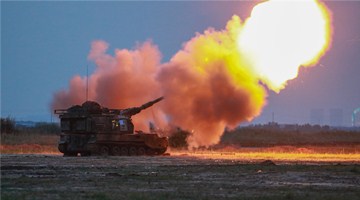By Lin Yuan
According to foreign media reports, the US Senate and House of Representatives have recently passed their respective versions of the fiscal 2023 defense budget draft. Both have requested a substantial increase in funding for technology R&D and equipment procurement, etc.
On June 22, the House Armed Services Committee voted for a proposal to add US$37 billion to the US$773 billion defense budget proposed by US President Joe Biden. Prior to this, the House Armed Services Committee had approved an additional defense budget of US$45 billion for the Fiscal Year 2023. The US Senate and House of Representatives will decide the final budget amount in relevant sessions, but in any case, the defense budget of at least US$810 billion will hit a record high.
It is reported that in the fiscal year 2023, the US military will focus on accelerating the deployment of hypersonic weapons, establishing key ammunition reserves, as well as strengthening cyber combat capabilities and key military technology R&D.
Against the backdrop of the constant spread of the COVID-19 pandemic and the severe economic situation, the US Congress passed a defense budget draft of a high amount. Biden said that it’s crucial to provide sufficient funds to ensure that the US military maintains the best-equipped troops in the world. US Secretary of Defense Lloyd J. Austin said that the defense budget is a reflection of the US national security strategy and can help the US effectively handle future challenges and maintain its position as a global leader. Senator Jack Reed, Chairman of the Senate Armed Services Committee (SASC) believed that the additional US$45 billion allocated by the US Congress to the Armed Forces will offset “runaway inflation”. However, the New York Times pointed out that the US Democrats and Republican congressmen, who are bound to fall into disputes whenever coming to decide an issue, are now vying to stand for the sky-high budget of military spending in order to share benefits by politicians and defense contractors in the military-industrial complex.
According to projections by the US Congressional Budget Office (CBO), the US will spend about US$8.5 trillion in the military sector over the next 10 years, exceeding the total budget of the non-military sectors by US$500 billion. The US media reported that increasing funding for new weapons and overseas bases cannot make up for America’s failures in cutting-edge scientific research, infrastructure, and trade policy. As military budgets continue to increase, American citizens feel increasingly insecure.
Anthony H. Cordesman, Emeritus Chair in Strategy at the Center for Strategic and International Studies (CSIS), once said that the defense budget is a symbol of strategic determination, instead of a shopping bill. From the perspective of the investment focuses of the US defense budget, there are two major trends shown for the future development of the US military.
On the one hand, it aims at “major power competition.” The defense budget drafts of the US Senate and House of Representatives both call for more than US$6 billion to support the US allies in the Asia-Pacific region and US$4 billion to support its allies in Europe. Among others, the funding invested in the Asia-Pacific region is mainly for enhancing the US military presence in the region, deepening cooperation with allies, and building bases and deploying weapons in Asia. While the funding in Europe is mainly to aid foreign militaries, support the Baltic Sea Security Initiative, and formulate strategies and resource assurance plans to enable the US military to adapt to the ever-changing security situation in Eastern Europe.
On the other hand, it focuses on the development of cutting-edge technology. The technology R&D funds account for a major share of the US defense budget draft for the Fiscal Year 2023, indicating that the US military still upholds the principle of “technology-centered competitiveness to win”. Along with the approval of the defense budget increase for the Fiscal Year 2023, US Deputy Secretary of Defense Dr. Kathleen H. Hicks signed out the Responsible Artificial Intelligence Strategy and Implementation Pathway, which has made it clear that the US Department of Defense will develop a basic strategy for the implementation of artificial intelligence. The US military will continue to deepen the practical application of technologies including artificial intelligence, big data, cloud computing, and unmanned autonomy, and meanwhile seek to promote the development of its military construction.











